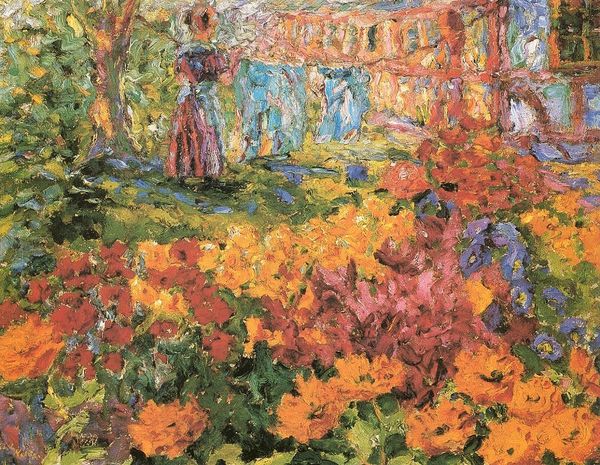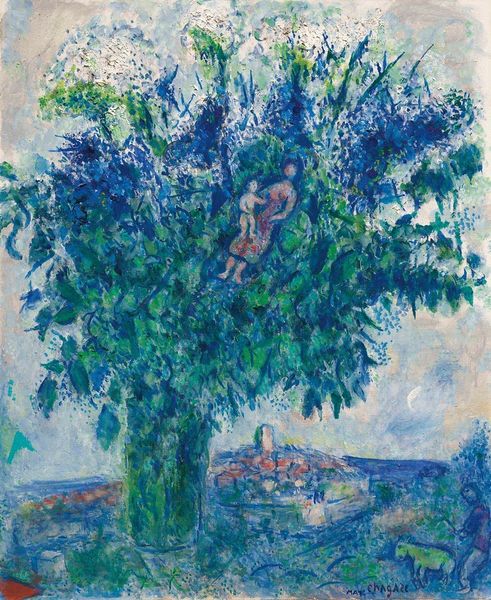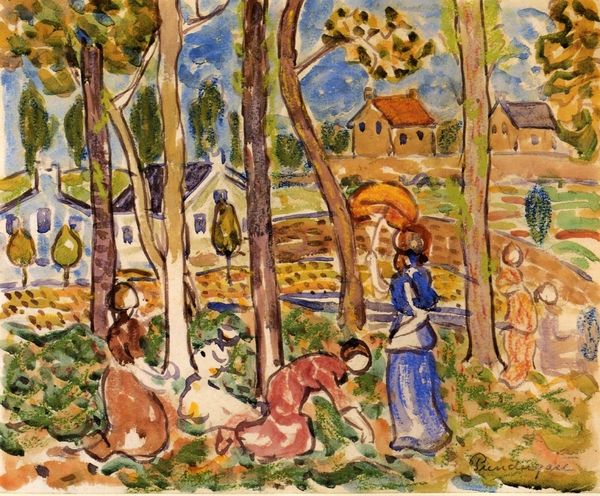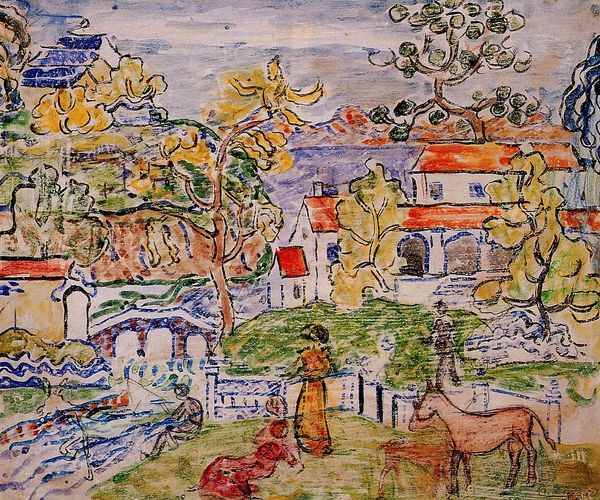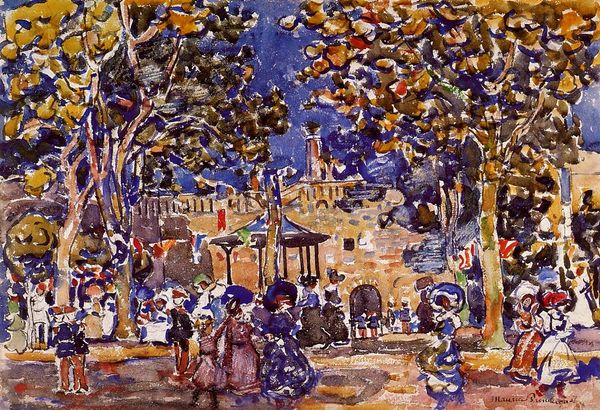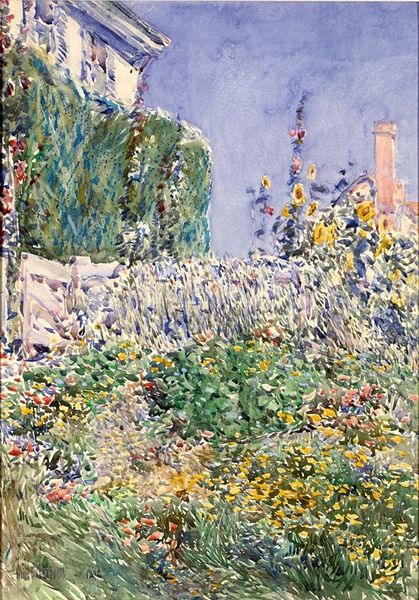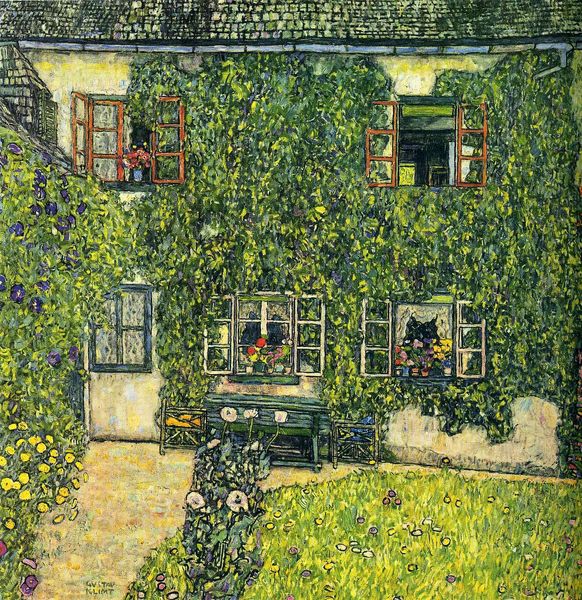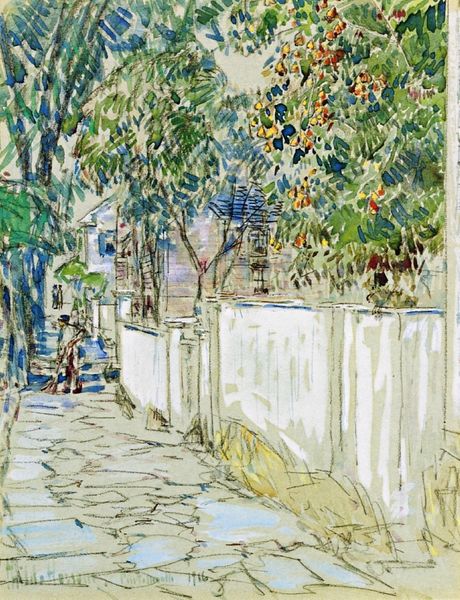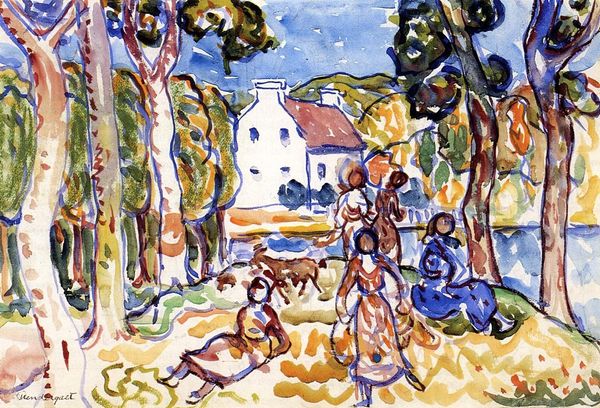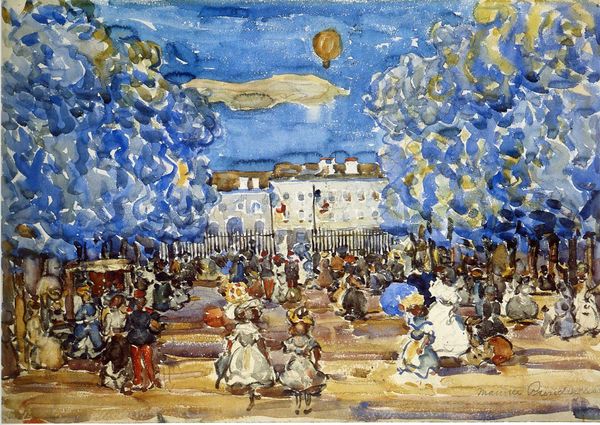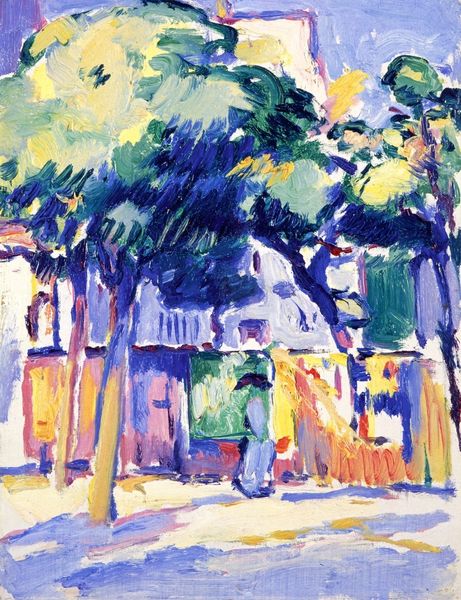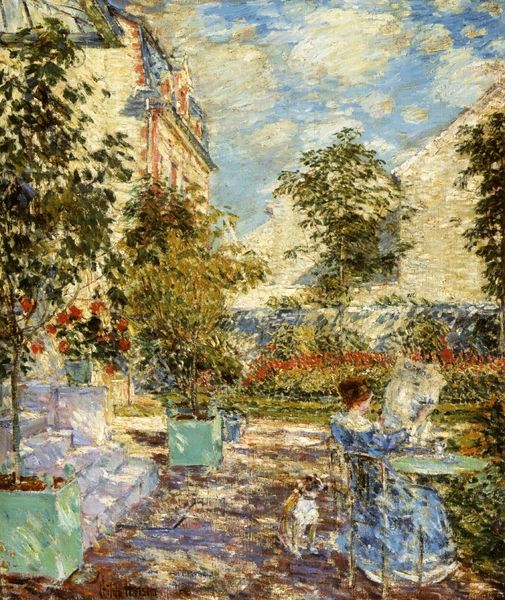
Dimensions: 54.93 x 37.78 cm
Copyright: Public domain
Editor: So this is Maurice Prendergast's "Spring Promenade," made around 1911. It seems to be watercolor on paper, depicting a sunny scene in a park with elegantly dressed figures. The colors are really vibrant and it makes me think of a happy, bustling community. What strikes you when you look at it? Curator: It’s fascinating how Prendergast captures leisure and social life during a time of massive change. Notice how he's flattening the perspective. This relates to larger trends in art world seeking to break from academic styles but consider *who* gets to leisurely stroll and be seen here? What socioeconomic class do these people probably belong to? Editor: Well, they’re definitely not working-class, judging by their clothes and parasols. They seem well-off, like they have time and money to enjoy the park. Does this kind of subject matter tell us something about the art world and who it catered to back then? Curator: Precisely! Early 20th-century art markets often catered to the bourgeoisie. Images like this one reinforced a certain ideal. Museums and galleries played a role by displaying and valuing specific narratives of the public sphere and of leisure. Consider where this work might have been shown or seen at the time. Editor: That makes sense. It really highlights the connection between art and society, how galleries showed scenes that mostly represented and appealed to upper-class tastes. The Impressionistic style, with its emphasis on fleeting moments, seems to almost idealize this lifestyle. Curator: Exactly. The style isn't neutral; it plays into the overall message. And think about the historical context. These parks themselves were designed and regulated public spaces reflecting certain social values and ideas of urban life. We must see what is absent as much as what is present. Editor: I never thought about it that way. So much of art isn't just about individual expression, it's tied to who it’s for and how institutions shape its message. Curator: Precisely. Now we should study similar pieces by peers. You'll start seeing just how powerful an image can be.
Comments
No comments
Be the first to comment and join the conversation on the ultimate creative platform.

